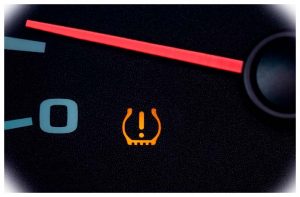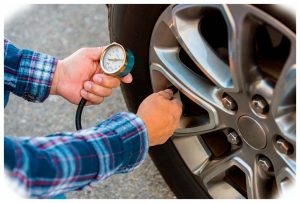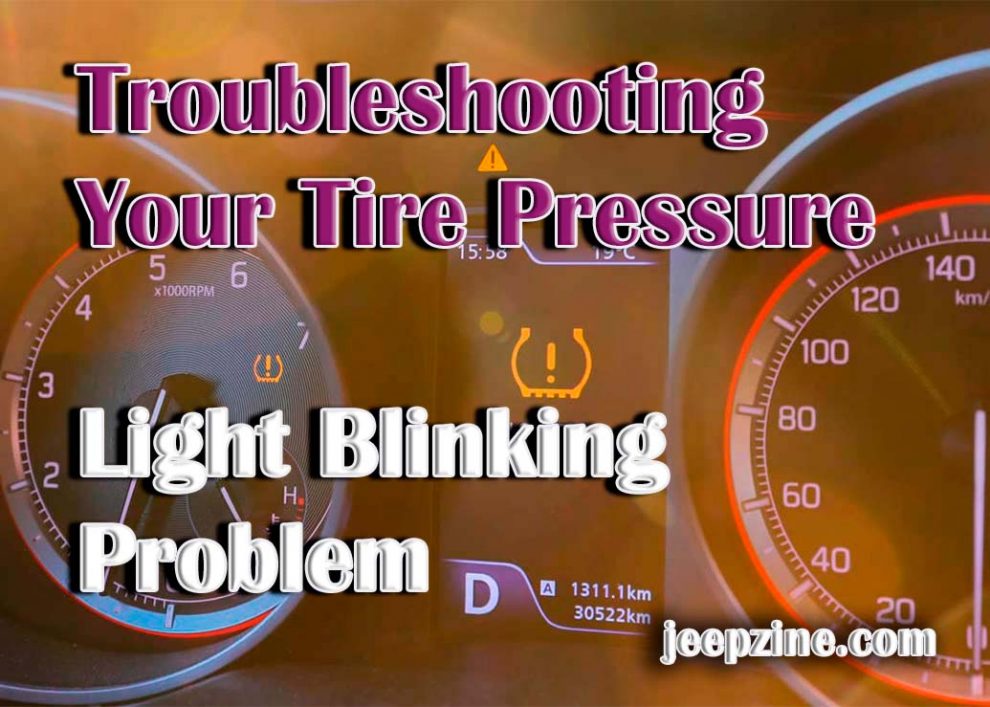A Tire Pressure Monitoring System (TPMS) is an electronic system designed to monitor and maintain the pressure of each tire in a vehicle. A properly functioning TPMS helps alert drivers when their tires have low pressure, allowing them to adjust the tire pressure for optimal performance and safety. The TPMS also monitors the temperature of each tire, helping identify potential issues before they become a problem.
What does a Blinking Tire Light Mean?

Causes of a Blinking Tire Light:
Low Tire Pressure: Low tire pressure on one or more wheels is one of the most common causes of a blinking tire light. Low inflation can reduce fuel efficiency and affect handling capabilities while driving, which can be dangerous if not addressed immediately.
Faulty TPMS Sensors: Another possible cause is a faulty TPMS sensor. This can be due to weather damage, age, or improper installation. When this is the case, the sensor must be replaced to properly monitor tire pressure and temperature.
Battery Issues: Another potential cause of a blinking tire light is a faulty battery within the TPMS system itself. This often happens when the battery has been damaged due to age or improper installation and needs to be replaced as soon as possible.
Faulty Wiring: Faulty wiring within the system can also cause a blinking tire light, as this will prevent it from accurately measuring pressure and temperature levels on each wheel.
System Malfunction: It’s also possible for the system to malfunction entirely if a component is not installed correctly or if it’s been damaged due to wear and tear over time. In this case, it’s best to have all components inspected by a professional mechanic for optimal performance and safety on the road.
How To Troubleshoot A Blinking Tire Light:

Inspect TPMS Sensors: If the tire pressure is within acceptable levels, it’s time to inspect each TPMS sensor for any signs of damage or improper installation. If a sensor looks damaged, it will need to be replaced for the system to work correctly.
Replace TPMS Battery: If no faults are found with your TPMS sensors, you may need to replace the battery within the system itself if it has been damaged due to age or improper installation. This can help restore proper function and prevent issues in the future.
Inspect Wiring: Faulty wiring within your TPMS system can also cause a blinking tire light. Inspect all wiring for any signs of damage or corrosion before proceeding further with troubleshooting efforts.
Visit a Mechanic: If you suspect a system malfunction, it’s best to have the entire TPMS system inspected by a professional mechanic for optimal performance and safety on the road.
Tips To Prevent TPMS Issues
- Always monitor your tire pressure levels and adjust as needed.
- Inspect all TPMS sensors for signs of damage or improper installation.
- Check the battery within the system periodically to ensure it is functioning correctly.
- Have your wiring inspected by a professional mechanic to ensure everything is up to date.
Conclusion
A Tire Pressure Monitoring System (TPMS) in your vehicle can provide peace of mind on the road and help alert you when something isn’t quite right. However, if you see your tire light blinking, it’s important to immediately identify and address any issues that may be causing it. From checking each wheel for proper inflation levels to inspecting TPMS sensors and batteries, there are several steps you can take to diagnose any potential problems with your TPMS system and get back on the road safely.


Add Comment